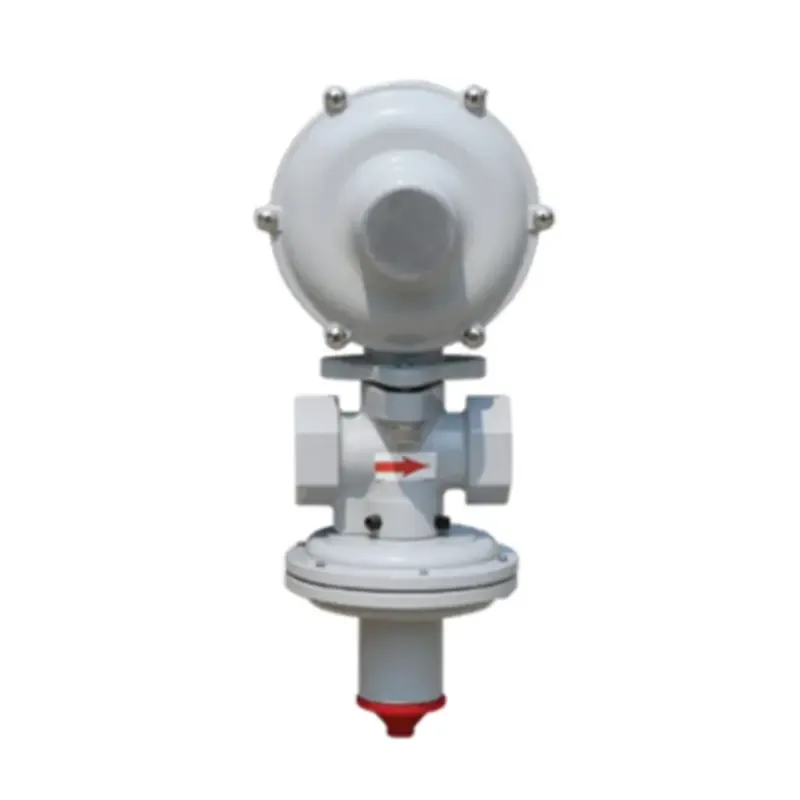
Dec . 21, 2024 17:19
Back to list
Exploring the Advantages and Applications of Pneumatic Valves in Modern Industries
Understanding Pneumatic Valves Key Components in Fluid Control
Pneumatic valves play a crucial role in various industrial applications, acting as vital components in fluid control systems. These valves manage the flow of compressed air or gas, enabling the automation of processes in numerous sectors, including manufacturing, automotive, and robotics. Their importance lies not only in controlling motion but also in enhancing efficiency, precision, and safety in operations.
What are Pneumatic Valves?
Pneumatic valves are mechanical devices that regulate the flow of air or gas within pneumatic systems. They are designed to either allow or stop the movement of air, thereby influencing the performance of pneumatic actuators. Actuators, such as cylinders and motors, convert the energy of compressed air into mechanical motion, making the role of valves instrumental in the entire pneumatic system.
Types of Pneumatic Valves
There is a wide variety of pneumatic valves, each serving specific functions based on their design and operation mode. Some of the most common types include
1. Directional Control Valves These valves determine the path of the compressed air flow. They can be activated electrically, manually, or mechanically and are crucial for controlling the movement of actuators. For instance, a double-acting cylinder requires a directional valve to switch the air supply between the two sides of the cylinder.
2. Pressure Control Valves As the name suggests, these valves are designed to maintain or regulate pressure within the system. They can be used in various settings, such as pressure relief valves, which protect the system against over-pressurization, or pressure reducing valves, which ensure that devices receive air at a safe, regulated pressure.
3. Flow Control Valves These valves are used to adjust the speed of the actuators by controlling the airflow rate. By adjusting the flow, operators can fine-tune the motion speed of pneumatic cylinders and other devices, contributing to a more controlled and efficient application.
4. Check Valves These one-way valves allow air to flow in one direction only, preventing backflow. This feature is critical for maintaining system integrity and ensuring that the flow is regulated correctly.
pneumatic valve

Working Mechanism
The operation of pneumatic valves is influenced by multiple factors, including the source of actuation and the type of control system in place
. In general, pneumatic valves function by receiving an input signal (electrical, mechanical, or pilot-operated) that causes the valve to change its position, either opening or closing the flow of air or gas.The most common actuation method involves solenoid valves, where an electric current energizes a coil to create a magnetic field, moving a plunger that opens or closes the valve seat. This allows for a quick and reliable automated system that can be integrated with programmable logic controllers (PLCs) and other electronic systems for improved process control.
Applications
Pneumatic valves find applications in numerous fields, including
- Manufacturing In assembly lines, pneumatic valves control the movement of tools and parts, enabling synchronized operations. - Automotive In automotive systems, they manage processes ranging from paint spraying to controlling airbag deployment. - Robotics Pneumatic actuators activated by valves are often used in robotic arms for precise movement and control.
Advantages of Pneumatic Valves
1. Efficiency Pneumatic systems can cycle rapidly, increasing production rates. 2. Precision Fine control over pressure and flow leads to accurate movements and operations. 3. Safety Many pneumatic valves come with built-in safety features, such as pressure relief mechanisms to prevent accidents. 4. Cost-Effectiveness Generally, pneumatic systems are less expensive to maintain compared to hydraulic systems.
Conclusion
Pneumatic valves are indispensable in modern industrial applications, enabling the automation of processes and improving overall efficiency. With a variety of designs catering to different functions, these valves ensure that pneumatic systems operate reliably and safely. Understanding their types, functions, and applications is essential for engineers and technicians looking to optimize pneumatic systems in various industries. The ongoing advancements in pneumatic technology continue to enhance valve performance, driving further innovations in automation and control.
Next:
Latest news
-
Safety Valve Spring-Loaded Design Overpressure ProtectionNewsJul.25,2025
-
Precision Voltage Regulator AC5 Accuracy Grade PerformanceNewsJul.25,2025
-
Natural Gas Pressure Regulating Skid Industrial Pipeline ApplicationsNewsJul.25,2025
-
Natural Gas Filter Stainless Steel Mesh Element DesignNewsJul.25,2025
-
Gas Pressure Regulator Valve Direct-Acting Spring-Loaded DesignNewsJul.25,2025
-
Decompression Equipment Multi-Stage Heat Exchange System DesignNewsJul.25,2025

